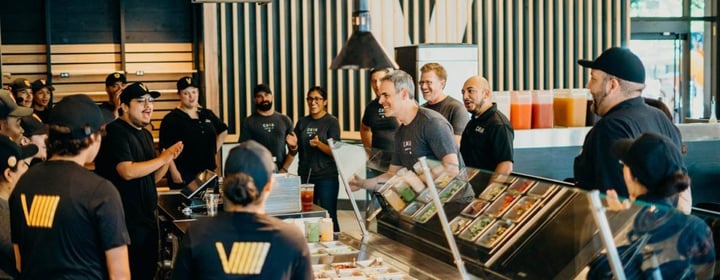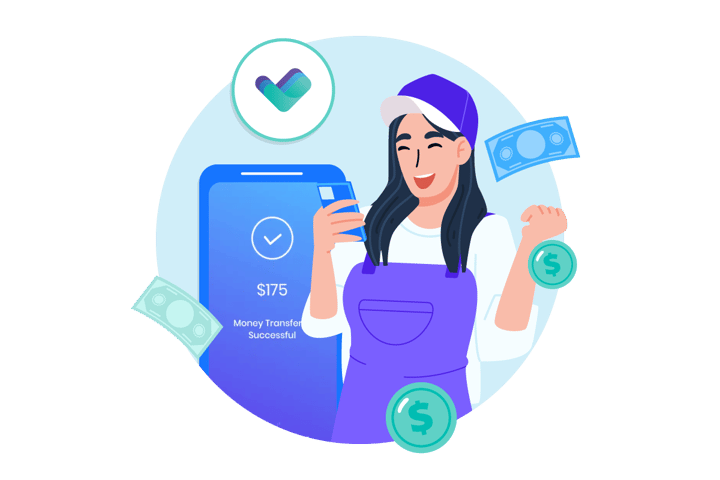
- Home
- Crunchtime Blog
- How To Optimize Your Restaurant Schedules With Gen Z Employees

How To Optimize Your Restaurant Schedules With Gen Z Employees
Providing a strong employee experience for Gen Z team members is critical for the future of your labor force.
We recently discussed what you need to know to provide Generation Z with a guest experience that keeps them coming back to your restaurant. Now we’ll examine how to create an experience for Gen Z employees that retains them and limits turnover. Now is the time to think about this; summer vacation season is just about here, which means young people are finishing school and will be looking for work.
Most of the people preparing for summer vacation on are from the Gen Z demographic. These individuals were born anywhere from the mid-90s through the late 2000s. Older Gen Z members are just starting to enter the professional workforce. The younger end are looking for their first job of any kind. The gap between the two ends of the spectrum is significant, so appealing to Gen Z employees means understanding different social and economic situations, while also adhering to a wide range of labor laws.
Managing Your Young Employees
 According to a study conducted by the National Restaurant Association Educational Foundation and the Center for Generational Kinetics, less than half (48 percent) of Gen Z restaurant employees say good management is the key to retaining them. That means that when it comes to making job decisions, the majority of Gen Z isn't swayed by management. That's not to say management isn't important. Strong leadership and adequate training will always be critical to the employee experience. This statistic says more about Gen Z's entrepreneurial spirit and their propensity for being self starters.
According to a study conducted by the National Restaurant Association Educational Foundation and the Center for Generational Kinetics, less than half (48 percent) of Gen Z restaurant employees say good management is the key to retaining them. That means that when it comes to making job decisions, the majority of Gen Z isn't swayed by management. That's not to say management isn't important. Strong leadership and adequate training will always be critical to the employee experience. This statistic says more about Gen Z's entrepreneurial spirit and their propensity for being self starters.
Today, young workers are increasingly taking control of their earning potential. According to data cited by Inc., 72 percent of high school students want to start their own business. Additionally, just under a quarter of people between the ages of 13 and 21 have made money online using platforms like Amazon and Etsy to sell goods and services. Ultimately, young team members aren't satisfied being a cog in a machine. Moreover, these empowered earners know how to leverage their resources to get what they want.
You can provide an employee experience aligned with Gen Z's career expectations with the right technology. Your young team members should have the ability to manage their schedules using the tools they're familiar with. According to the Global Web Index, 98 percent of internet users aged 16 to 20 – who sit firmly in the Gen Z category – own a smartphone. As the previous data shows, they know how to wield these devices for professional development. While managers have final say, enabling Gen Z employees to manage schedules on their own devices will provide a more fulfilling experience for your young workforce and ensure you're getting the right people on every shift.
Scheduling Gen Z Employees (and Following Labor Laws)
At the end of the day, your managers are responsible for employee schedules. It's up to them to ensure each shift is properly staffed. When scheduling Gen Z team members, there are many factors to consider. As we previously stated, Gen Z covers a wide range of ages and members are currently in their formative years. Each employee is likely developing skills that fit unique needs. For example, those who have shown a greater ability to work quickly should probably work busier shifts. There may be others with different skill sets that would be better utilized during shifts where their abilities are more helpful.
Automatically generated schedules based on sales forecasts, employee data, and user-generated schedule requests and availability can ensure each shift it optimized with both the right people and the right number of people. A smart labor management system that also takes legal matters into account will help prevent any scheduling violations, which is incredibly important when dealing with younger workers.
While employees fight for higher wages, various states are proposing regulatory changes. Last month, Louisiana legislators proposed looser child labor laws. While the proposal was stalled, it shows that labor laws are in a state of flux. Keeping track of changes and incorporating them into Gen Z employee schedules is incredibly taxing. This is simply another example why incorporating data into automatic schedules is so critical.
There's no getting around it. Your restaurants will hire more Gen Z employees this summer and in the coming years. Using the right tools will provide an employee experience that keeps them around while optimizing your schedules and reducing labor costs.
Share this post
Related


Workforce Management Requires Labor Optimization

